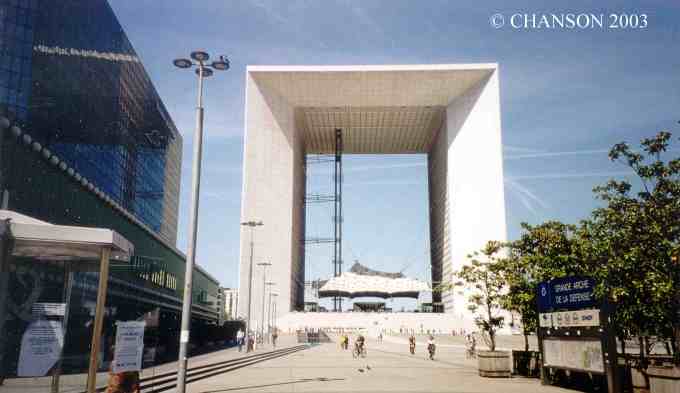

Advanced study of ideal- and real-fluid flows including 'potential flow' analysis, boundary layers, jets & wakes, diffusion & dispersion, fluid-structure interactions.
Syllabus : Irrotational flow: flow nets, graphical & analytical compounding, standard flow patterns. Real fluid flows: wakes, bluff body flows. Fluid-structure interactions.
#2 (3L1T) 1st semester, Internal. Pre: CIVL2131/CIVL3130. Recommended : CIVL3140.
Assessment: Practicals & Final examination.
Lecturer: Professor Hubert CHANSON (2013-12,2010-09,2007-2005,2003)
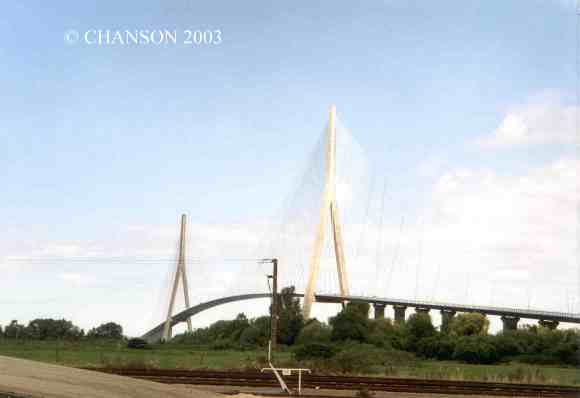 Outline
(Ideal fluid
flow)
Outline
(Ideal fluid
flow)Subject rationale: The basic equations of motions may be solved analytically for irrotational motion of ideal fluid. The theory is developed in the lectures and simple two-dimensional flow net analysis is presented.
Subject goals: At the end of the course, the student will have gained some basic understanding in two-dimensional flows, as well as a series of pre-design tools to estimate the velocity field and pressure distributions on flow around structures.
Professional Literacy: CIVL4160 Advanced Fluid mechanics ‐ Professional Literacy
Assumed background: Pre-requisite : Fluid Mechanics CIVL2131/CIVL3130. Recommended : Open Channel Hydraulics CIVL3140
+ CHANSON, H. (2014). "Applied Hydrodynamics: An Introduction." CRC Press, Taylor & Francis Group, Leiden, The Netherlands, 448 pages & 21 video movies (ISBN 978-1-138-00093-3). (Record at UQeSpace)
Alternative
+ CHANSON, H. (2009). "Applied Hydrodynamics: An Introduction to Ideal and Real Fluid Flows." CRC Press, Taylor & Francis Group (ISBN: 978-0-415-49271-3 (Hardback); 978-0-203-87626-8 (eBook)) (Information at UQespace) (Corrections and updates)
Dr. J. CUNGE, in Journal of Hydraulic Research, 2013, Vol. 51, No. 1, pp. 109-110. (PDF file)
"This book merits being read and even studied by a very large spectrum of people who should be able to find it on the shelves of the professional and university libraries that respect themselves. [...] There is an abyss of ignorance concerning Hydrodynamics bases. [...] This population of modellers [the users of commercial hydraulics simulation software] receive now, with Hubert Chanson’s book, a tool for such understanding as well as the material for individual catching up with desired knowledge profile."
Dr. O. CASTRO-ORGAZ, in Journal of Hydraulic Engineering, 2013, Vol. 139, No. 4, p. 460. (PDF file)
"Professor Chanson’s book will be an important addition to the field of hydrodynamics. I am glad to recommend it to instructors, students, and researchers who are in need of a clear and updated presentation of the fundamentals of fluid mechanics and their applications to engineering practice."
Prof. B. PLATZER, in Z. Angew Math. Mech., 2011, Vol. 91, No. 5, p. 399. (PDF file)
"The book contains a lot of applications and exercises. It handles some aspects in more detail than other books in hydrodynamics. [...] A great number of the chosen applications comes from phenomena in nature and from technical applications." (Full review PDF file)
Review by Prof. B. PLATZER, in Z. Angew Math. Mech., 2011, Vol. 91, No. 5, p. 399. (Full review PDF file)
"The book contains a lot of applications and exercises. It handles some aspects in more detail than other books in hydrodynamics. [...] A great number of the chosen applications comes from phenomena in nature and from technical applications." (Full review PDF file)
Bibliography
+ VALLENTINE, H.R. (1969). "Applied Hydrodynamics." Butterworths, London, UK, SI edition. (Obituary of late Professor Rupert VALLENTINE 1917-2010)
+ STREETER, V.L. (1948). "Fluid Dynamics." McGraw-Hill Publications in Aeronautical Science, New York, USA.
+ LIGGETT, J.A. (1994). "Fluid Mechanics." McGraw-Hill, New York, USA.
+ SCHLICHTING, H. (1979). "Boundary Layer Theory." McGraw-Hill, New York, USA, 7th edition.
(Alternative site : http://www.dynaflow-inc.com/Software.htm or http://www.dynaflow-inc.com/DFlow/2dflow.htm)
+ CIVL4160 Advanced Fluid mechanics ‐ Professional Literacy
+ Introduction to Catchment Hydraulics, CIVL3140 website
+ Advanced Environmental Hydraulics, CIVL4120 website
+ BALDOCK, T.E., and CHANSON, H. (2006). "Undergraduate Teaching of Ideal and Real Fluid Flows: the Value of Real-World Experimental Projects." European Journal of Engineering Education, Vol. 31, No. 6, pp. 729-739 (DOI: 10.1080/03043790600911837) (ISSN 0304-3797). (PDF file at UQeSpace) (PDF file at EprintsUQ)
Contents
Chapter 1-1 - Fundamental Equations
Chapter 1-2 - Ideal Fluid Flows - Irrotational Flows
Chapter 1-3 - Two-Dimensional Flows (1) Basic equations and flow analogies
Chapter 1-4 - Two-Dimensional Flows (2) Basic flow patterns
Chapter 1-5 - Complex potential, velocity potential & Joukowski transformation
Chapter 1-6- Joukowski transformation, theorem of Kutta-Joukowski & lift force on airfoil
Chapter 1-7 - Theorem of Schwarz-Christoffel, free streamlines & applications
Chapter 2-1 - Real fluid flows: introduction
Chapter 2-2 - Turbulence: an introduction
Chapter 2-3 - Boundary layer theory. Application to laminar boundary layers
Chapter 2-4 - Turbulent boundary layers
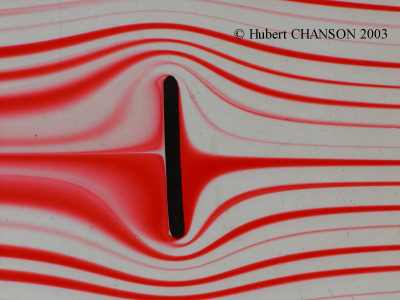
Hele-Shaw cell analogy
In viscous flow between two closely spaced, horizontal and parallel plates, the flow is laminar and the mean velocity across the space in any region is proportional to the pressure gradient : V = - k dP/ds where k is a function of the fluid density and viscosity and s is the streamwise direction. Hence the pressure is analogous to the velocity potential of irrotational flow: i.e., the Hele-Shaw cell analogy.
In practice, a transparent fluid is caused to flow slowly between the plates and dye is continuously injected into the fluid at regular intervals across the inflow boundary. An object placed between the plates causes the fluid to deviate in flowing around it, and the dyed portions of the fluid trace out streamlines for two-dimensional potential flow. Examples include : (1) the flow past a Rankine body, where the green dye injected at the source does not mix with the red dye injected in the uniform flow (flow from left to rigth), (2) the flow past a thick rounded plate perpendicular to the flow (flow from right to left), (3) the flow past a thick rounded foil with 15% camber perpendicular to the flow (flow from right to left).
Note: The Hele-Shaw-cell apparatus was initially presented in : HELE-SHAW, H.J.S. (1898). "Investigation of the nature of the surface resistance of water and of stream-line motion under certain experimental conditions." Trans. Inst. Naval Architects, Vol. 40.
Magnus effect
The Magnus effect characterises the lift force exerted on a rotating cylinder in an uniform flow. The lift force is proportional to the fluid density, uniform flow velocity and the rotation speed of the cylinder. It is named after H.G. MAGNUS (1802-1870), a German physicist who investigated this effect in 1852. The rotor ship, designed by Anton FLETTNER (1885-1961) about 1924, used this principle. It was designed by mounting large vertical circular cylinders on the ship and then mechanically rotating the cylinders to provide circulation. More recently a similar system was developed for the new ship "Alcyone" of J.Y. COUSTEAU (Brochure)
The flow past a rotating cylinder may be achieved by the superposition of an uniform flow, a doublet at the origin and a vortex at the origin. The rotation of the cylinder induces a velocity acceleration on one side of the cylinder, associated with underpressure, and a fluid deceleration on the other side associated with an increase of pressure. The resulting pressure difference across the cylinder generates a lift force acting normal to the flow velocity.
The Magnus effect it is responsible for the curve of a top-spin tennis ball or a driven golf ball, and it affects the trajectory of a spinning artillery shell and intercontinental missiles. On the Alcyone vessel, the rotating cylinder was replaced by some suction effect on parts of the cylinder. The resulting flow pattern is very close to that of the flow past a rotating cylinder, without the cumbersome apparatus.
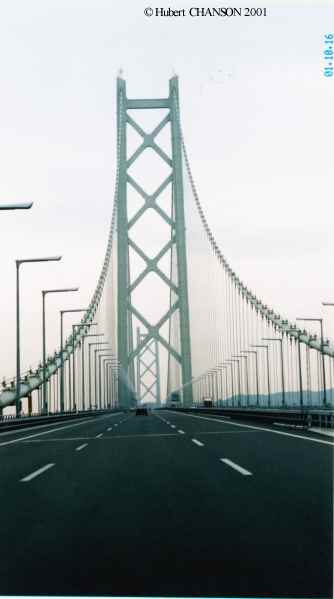 Tutorials, Exercises
Tutorials, ExercisesTutorials Real Fluid Flows (version 24/03/2015)
Previous tutorials
Tutorials Ideal Fluid Flows (version 14/02/2014)
Tutorials Ideal Fluid Flows (version 14/06/2013)
Tutorials Real Fluid Flows (version 14/06/2013)
Tutorials Real Fluid Flows (version 25/05/2009)
Tutorials Ideal fluid flows (version 03/06/2008)
Tutorials Real Fluid Flows incl. revision exercises (version 03/06/2008)
Complete assignment: Application of irrotational flow motion of ideal fluid to Civil Design on the Gold Coast
Complete assignment : Application of Irrotational Flow Motion of Ideal Fluid to the Design of the Alcyone 2
References :
Alcyone 2 : Fondation Cousteau's vessels
Flettner Rotorship : {http://physics.kenyon.edu/EarlyApparatus/Miscellaneous/Rotor_Ship/Rotor_Ship.html} & {http://www.efluids.com/efluids/gallery/gallery_pages/flettner_rotorship_page.htm}
Software : 2DFlow Plus by Dynaflow (For teaching purposes only)
(Information site : http://www.dynaflow-inc.com/Products_DW/Software/DFlow/2dflow_DW.htm)
(1) Flow past a Rankine body, where the green dye injected at the source does not mix with the red dye injected in the uniform flow (flow from left to rigth).Flow past an orifice and a Venturi
(2) Flow past a thick rounded plate perpendicular to the flow (flow from right to left).
(3) Flow past a thick rounded foil with 15% camber perpendicular to the flow (flow from right to left)
2015 Project on Wind Loads on Buildings
Read the Instructions. (Version 1.09. 9/04/2015)
Photo No. 2015.1: Hot-wire probe measurements
Photo No. 2015.2: Probe traverse mechanism
Photo No. 2015.3: Computer data acquisition and probe signal sampling.
Photo No. 2015.4: Wind tunnel test section and students conducting velocity measurements around the building model
Photo No. 2015.5: Students conducting probe sampling and data analysis
Photo No. 2015.6: Hot-wire probe in the near wake of the building model for 0-degree angle of incidence
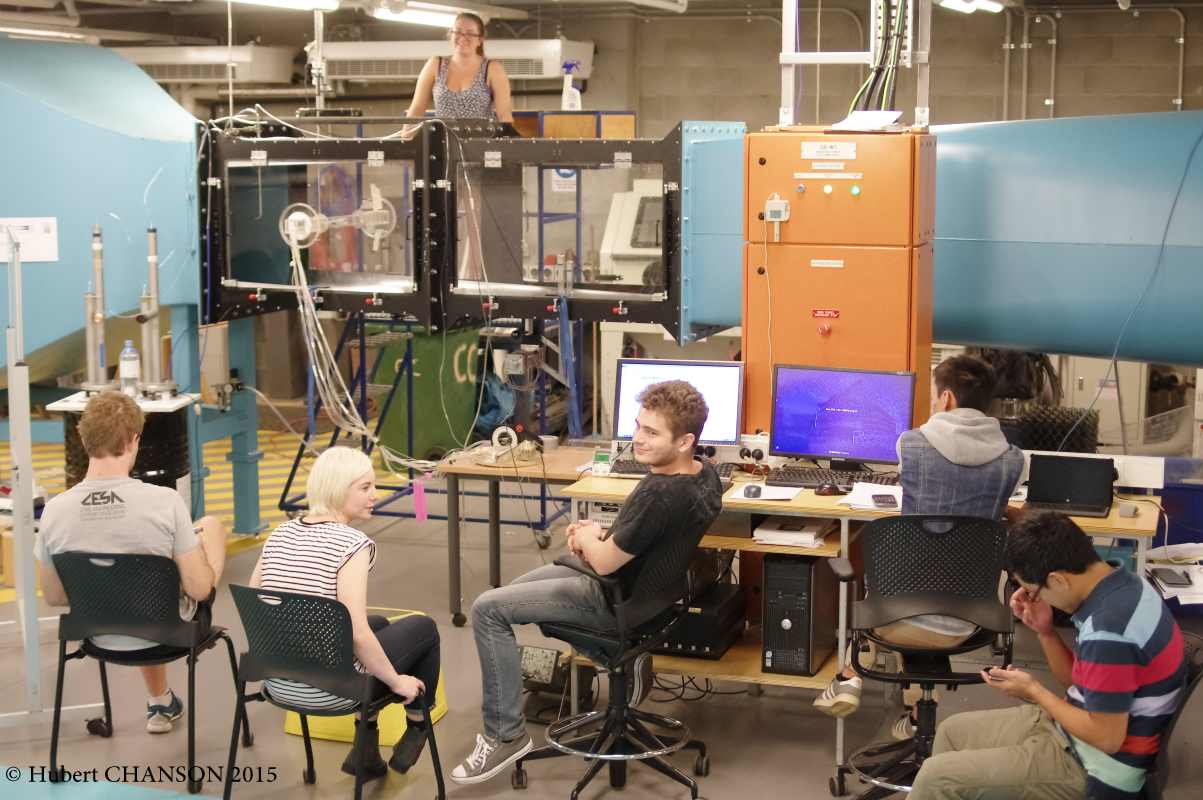
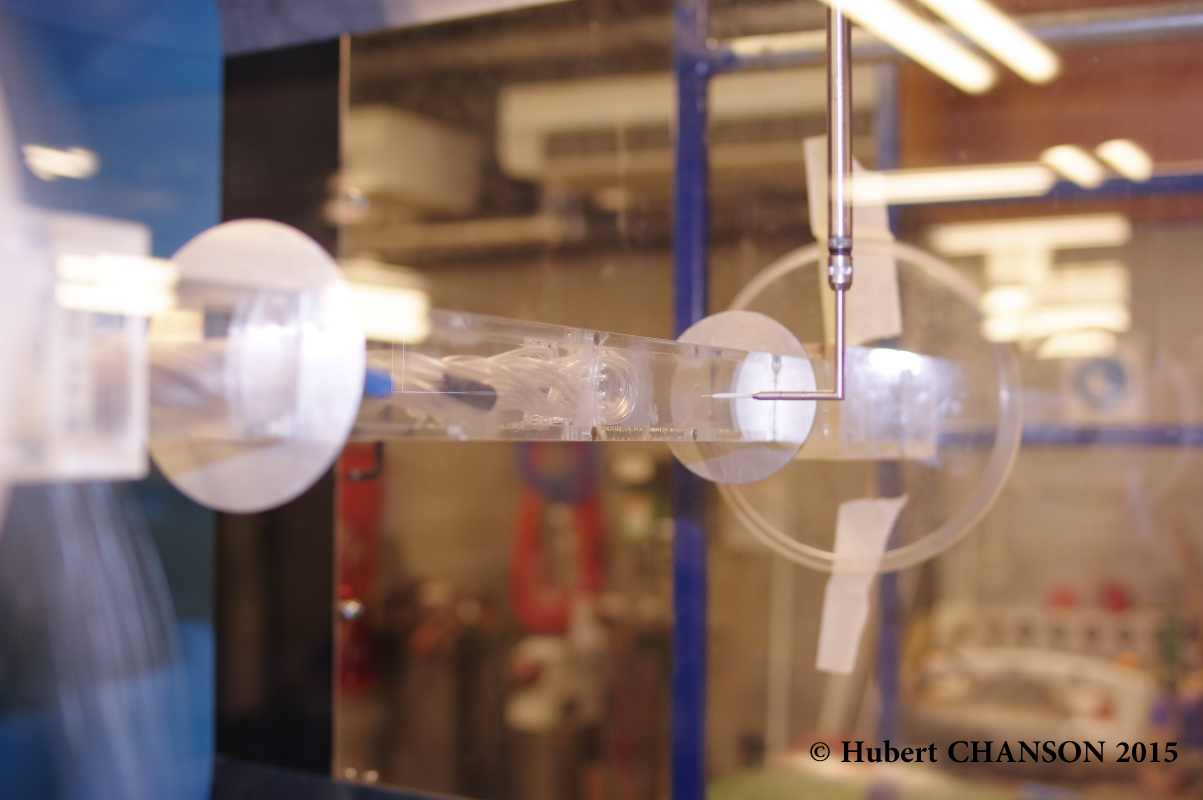
2014 Project on Wind Loads on Buildings
Read the Instructions. (Version 1.0. 8/04/2014)
2013 Project on Wind Loads on Buildings
Student anonymous feedback (2013 Project)
Read the Instructions. (Final Version 1.061 22/03/2013)
Photo No. 2013.1: Group No. 1 students using in the wind tunnel facility.
Photo No. 2013.2: Group No. 2 students using in the wind tunnel facility.
Photo No. 2013.3: Group No. 3 students using in the wind tunnel facility.
Photo No. 2013.4: Group No. 4 students using in the wind tunnel facility.
Photo No. 2013.5: Group No. 5 students using in the wind tunnel facility.
Photo No. 2013.6: Group No. 6 students using in the wind tunnel facility.
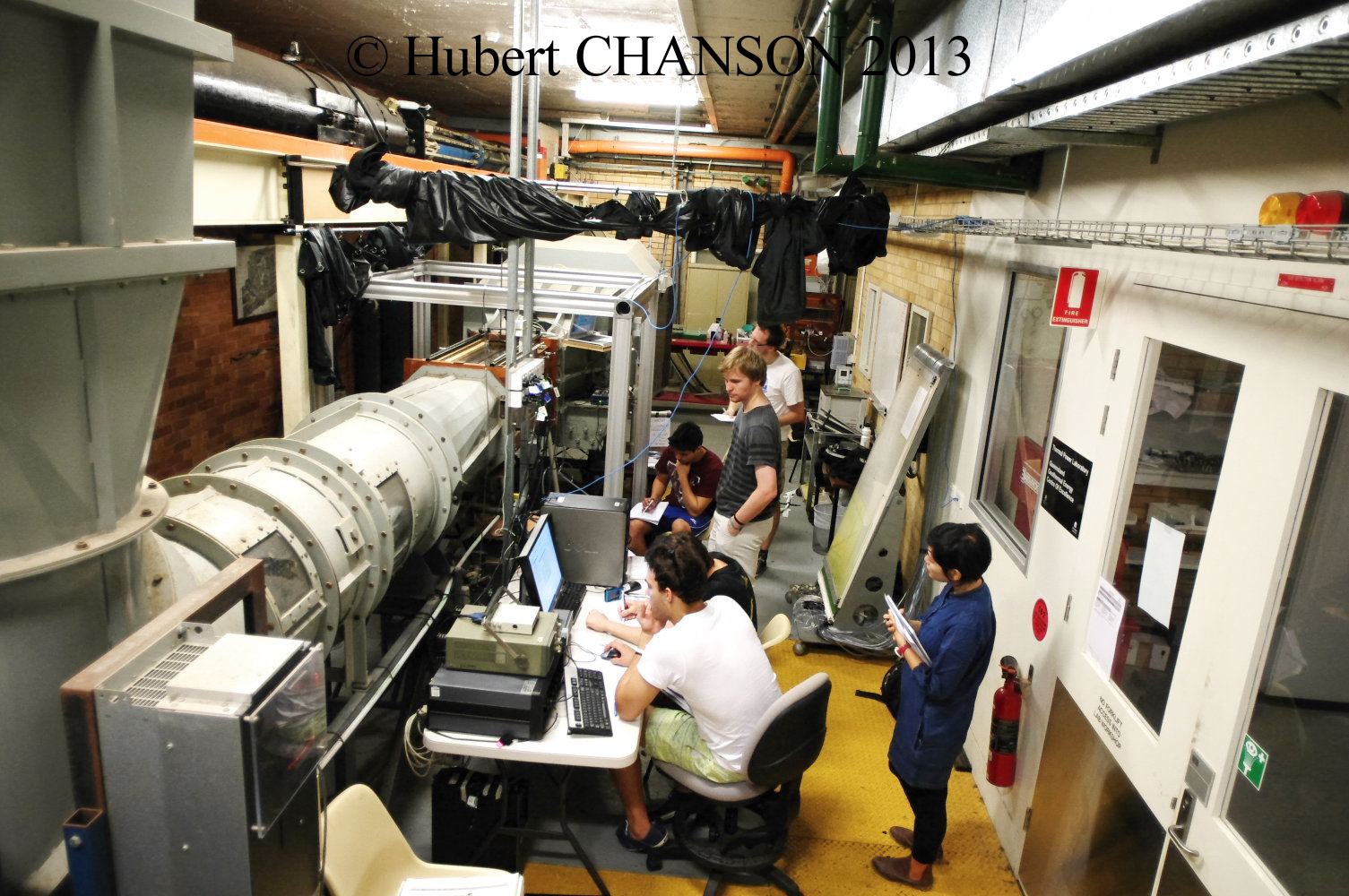
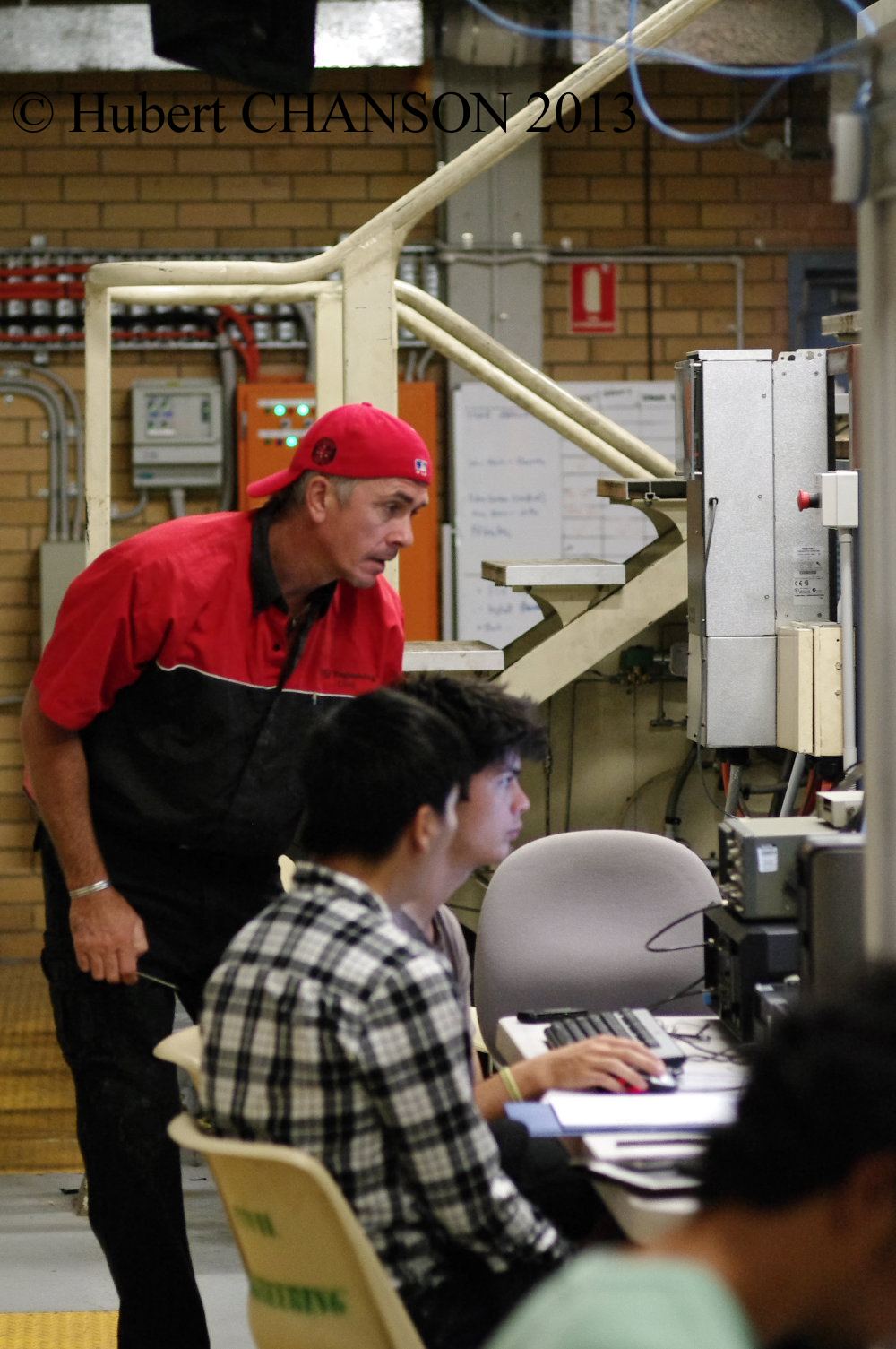
2012 Project on Wind Loads on Buildings
Student anonymous feedback (2012 Project)
Read the Instructions. (Version 1.02 27/03/2012)
2010 Project on Cyclonic Wind Loads on Buildings
Read the Instructions. (Complete Version 17/03/2010)
Student anonynous feedback (2010 project).
2009 Project on Cyclonic Wind Loads on Buildings
Read the Instructions. (Complete Version 30/03/2009)
2008 Project on Cyclonic Wind Loads on Buildings
Photo No. 1.1 : Group 1 students preparing the building model M2 in the wind tunnel, looking donwstream at the turn table
Photo No. 1.2 : Control room of the wind tunnel, view from the test section (Group 1)
Photo No. 2.1 : Control room of the wind tunnel, view from the test section (Group 2)
Photo No. 2.2 : Hele-Shaw cell experiment (Group 2) (Courtesy of Paul GUARD)
Photo No. 4.1 : Preparation of the rough plate boundary layer experiment (Group 4)
Photo No. 4.2 : Preparation of the building model M3 (Group 4) (Courtesy of Paul GUARD)
Photo No. 3.1 : Hele-Shaw cell experiment (Group 3) (Courtesy of Paul GUARD)
Photo No. 3.2 : Streamline visualisation in the Hele-Shaw cell apparatus (Group 3) (Courtesy of Paul GUARD)
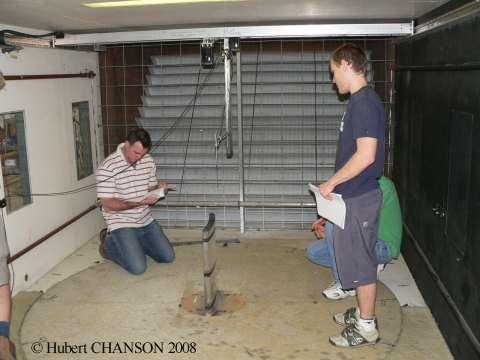
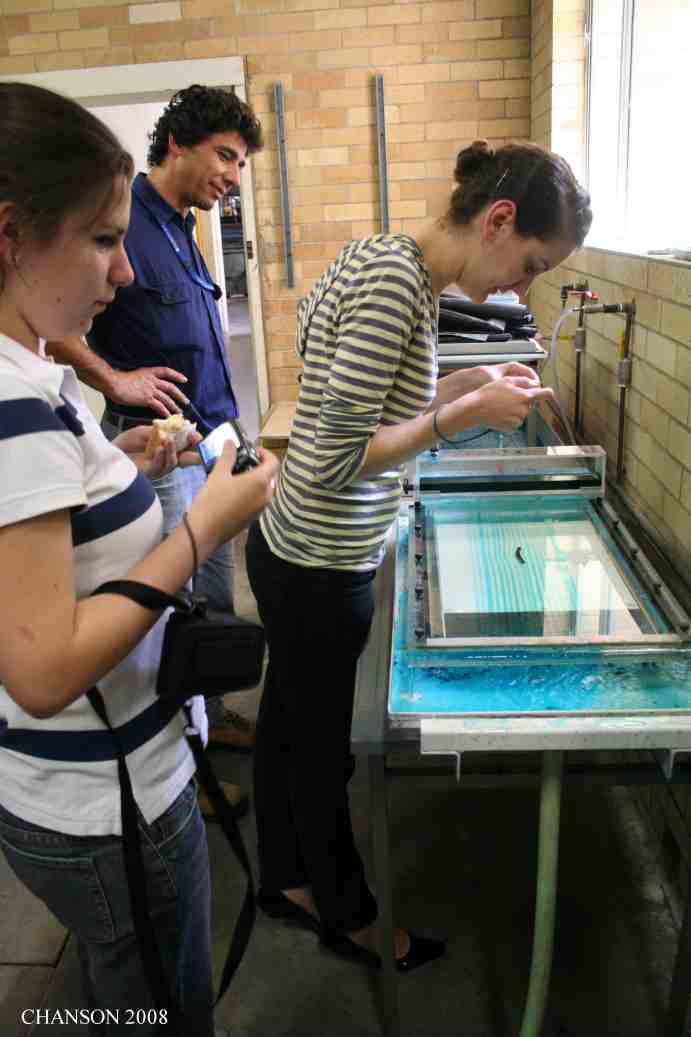

2007 Cyclonic Wind Loads on Buildings Project
Photo 1.1 : Installation of the hot-wire probe above the rought turbulent boundary layer experiment (Group 1)
Photo 1.2 : Group 1 students preparing the building model M3 in the wind tunnel, looking downstream at the turn table and building model.
Photo 2.1 : Group 2 students inspecting the rough turbulent boundary layer experimental setup.
Photo 2.2 : Hot-wire probe above the rough boundary layer experiment with some Group 2 students in the control room in the background.
Photo 3.1 : Group 3 students inspecting the wind tunnel equipment and instrumentation.
Photo 3.2 : Rough boundary layer experiment setup with wind direction from right ro left (Group 3).
Photo 4.1 : Group 4 students preparing the rough boundary layer experiment.
Photo 4.2 : Final instructions before the start of the experiment (Group 4).
Photo 5.1 : Group 5 student testing the wind flow (V ~ 16 m/s) in the wind tunnel (flow direction from right to left).
Photo 5.2 : Group 5 students setting up the rough turbulent boundary layer experiment.
Photo 6.1 : Group 6 students in the wind tunnel control room.
Photo 6.2 : Groud 6 students conducting hot-wire measurements from the wind tunel control room.
2006 Atmospheric Boundary Layer Wind Tunnel Project (Cyclonic Wind Loads on Buildings)
Photo No. 1 : Group 1 student project with building model M3; installation of the hotwire anemometer upstream of the building model.
Photo No. 2 : Group 2 students in the wind tunnel.
Photo No. 3 : Group 3 students installing the hot wire upstream of building model M2.
Photo No. 4 : Group 4 students in the control room of the wind tunnel.
2005 Wind tunnel projects
Photographs
Photo No. 1 : Group 1 looking at Hele-Shaw cell apparatus with dye injection, model M3 (15% camber) with zero angle of incidence on 26/04/2005.
Photo No. 2 : Group 2 students in wind tunnel installing the hot-wire upstream of the building model M3 on 27/04/2005.
Photo No. 3 : Group 3 students in wind tunnel with building model M2 in background on 28/04/2005.
Photo No. 4 : Group 4 students checking pressure tappings on building model M1 on 29/04/2005.
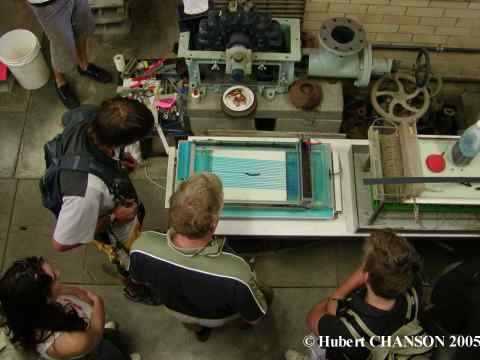
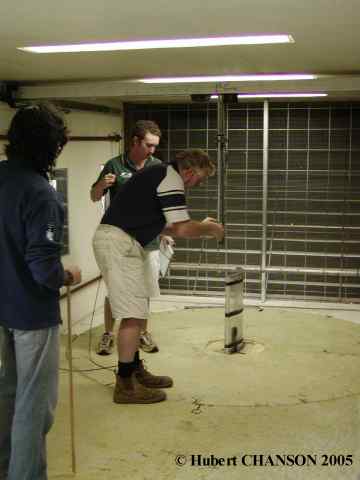
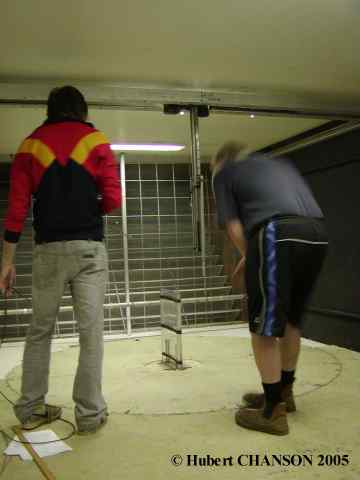
2003 Wind tunnel projects
Photographs - Example of inflow conditions : screens & grids and carpet floor (2003 setup).
Model M1 : straight building with rounded edge and flat roof. Photo No. 1: model standing in the atmospheric boundary layer wind tunnel.
Model M2 : circular arc building with 5% camber: Photo No. 1 : model being installed on the turning table.
Model M3 : circular arc building with 15% camber. Photo No. 1 : models M2 and M3 side by side.
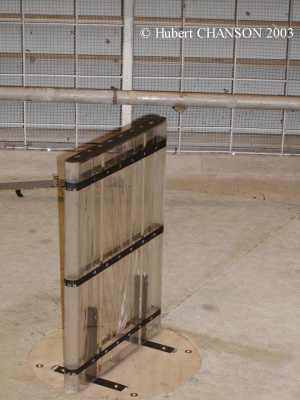
Rating : [***] = superb, must see - [**] = excellentGeneral
Rivers Seen from Space [**]
Structurae, International Database and Gallery of Structures [**]Qanats : an historical account [*]
Gallery of Photographs in Fluid Mechanics, Hydraulic & Environmental Engineering and Engineering History
ASME Database (American Society of Mechanical Engineers)Foundation Cousteau (see Alcyone)
Basic Fluid DynamicsUnesco Photobank [**]
Gallery of photographs in fluid dynamics by Mark Kramer [**]Computational Fluid Dynamics
Software : 2DFlow Plus (ZIP file) by Dynaflow (For teaching purposes only)
(Alternative site : http://www.dynaflow-inc.com/Software.htm or http://www.dynaflow-inc.com/DFlow/2dflow.htm)
Potential flow : superposition of elementary flows (University of Syracuse)
FEAT-Flow (Excellent site with numerical flow visualisations) [**]Atmosphere
The Morning Glory : amazing waves [**]Mixing and dispersion
Coastal Ocean Modeling at the USGS Woods Hole Field Center
EPA Multimedia projects (USA) (Chesapeake Bay, Gulf of Mexico)
Mixing in estuarine zones
Inlets on-line (USACE) [**]Atmospheric Fluid Dynamics
Estuaries in South Africa [*]
Morning Glory - Amazing Waves [**]Aircraft and aerodynamicsClimate Information (Australia)
Airbus Industry (go to Images, Photo gallery) [**]Deep sea currents / Oceanic circulation
Dassault Aviation
USAF Thunderbirds [**]
USN Blue Angels [**]
University of Washington PALACE Floats {http://flux.ocean.washington.edu/} [**]Coastal engineering
Scripps Dive into Science {http://aquarium.ucsd.edu/divein/divein.html}TOPEX/Poseidon Mission {http://topex-www.jpl.nasa.gov/} [***]
The Scripps Institution of Oceanography {http;//www.sio.ucsd.edu/}
Woods Hole Oceanographic Institution (WHOI) {http://www.whoi.edu/home/}
Gallery of photographs of coastal processes {http://www.uq.edu.au/~e2hchans/photo.html#Coastlines}Hydrology/Weather
Great Barrier Reef, National Geographic {http://www.nationalgeographic.com/ngm/0101/feature2/index.html}
Oceanic turbulence around Japanese islands {http://nisidriv.cv.noda.sut.ac.jp/www/eddy.htm}Photographs of tidal bores {http://www.uq.edu.au/~e2hchans/photo.html#Tidal bores, mascaret, pororoca}
The tidal bore of the Seine river {http://www.uq.edu.au/~e2hchans/mascaret.html}Whirlpools {http://www.uq.edu.au/~e2hchans/whirlpl.html}
Tsunamis {http://www.uq.edu.au/~e2hchans/photo.html#Tsunami}
Tidal links {http://www.linden-software.com/links.html}
National Weather Service Office of HydrologyRiver engineering
El Niño Information in California
Extreme reservoir siltation in Australia
IAHR MedialibraryWater quality issues
The tidal bore of the Seine river
Artifical river habitats and fish passes (photographs)
Flood plains (photographs)Weirs and small dams on the Kent river (UK) [**]
Computational modelling in hydraulics
SoftwaresHydrochan (TM) [**] Gradually-varied flows (1D) (for teaching purposes ONLY)
US Army Corps of Engineers HEC Softwares
Chicago Calumet waterway: sidestream aeration cascadesAustralian
Petit-saut dam (French Guyana): aeration cascade
Petit-Saut dam : photographs, dam detailsThe Aral sea
Photographs {http://www.uq.edu.au/~e2hchans/photo.html#Flood plains}
NASA Earth Observatory (1)(2)
TETHYS (Kazakhstan) and JRAK (Japan) Ecological expedition {http://www.kz/gallery/aral/tpict1.html}
Trip in Uzbekistan {http://www.fantasia.net/errol/}
Bureau of MeteorologyResources
Goulburn-Murray Water
Hydro-Electric Corporation (Tasmania)
Murray-Darling Basin Commission
NSW Department of Land and Water Conservation
QLD Department of Natural Resources [Water, Storages] [Glossary of terms]
CFD Resources OnlineUtility
A list of fluid mechanics related http servers
Structurae, International Database and Gallery of Structures [**]
University of Queensland LibraryMeasurement systems : SI Units and significant figures
Internet resources in Hydraulic Engineering : rubber dams, tidal bore, reservoir siltation, MEL culverts ...
ICEnet: The Institution of Civil Engineers, UK Homepage
Japan Society of Civil Engineers
ASCE - American Society of Civil Engineers Homepage
ASME - American Society of Mechanical EngineersENPC - Ponts et Chaussees
IAHR homepage (International Association for Hydraulic Research)US Geological Survey
Civil Engineering Resources on the Internet (GuideMe.com)
Video Player MPEG
Utilities - TUCOWS
Utilities - CNet
|
|
|
Deposits at UQeSpace |
Back to TOP
Back to Prof Hubert CHANSON's Home Page